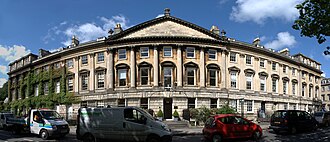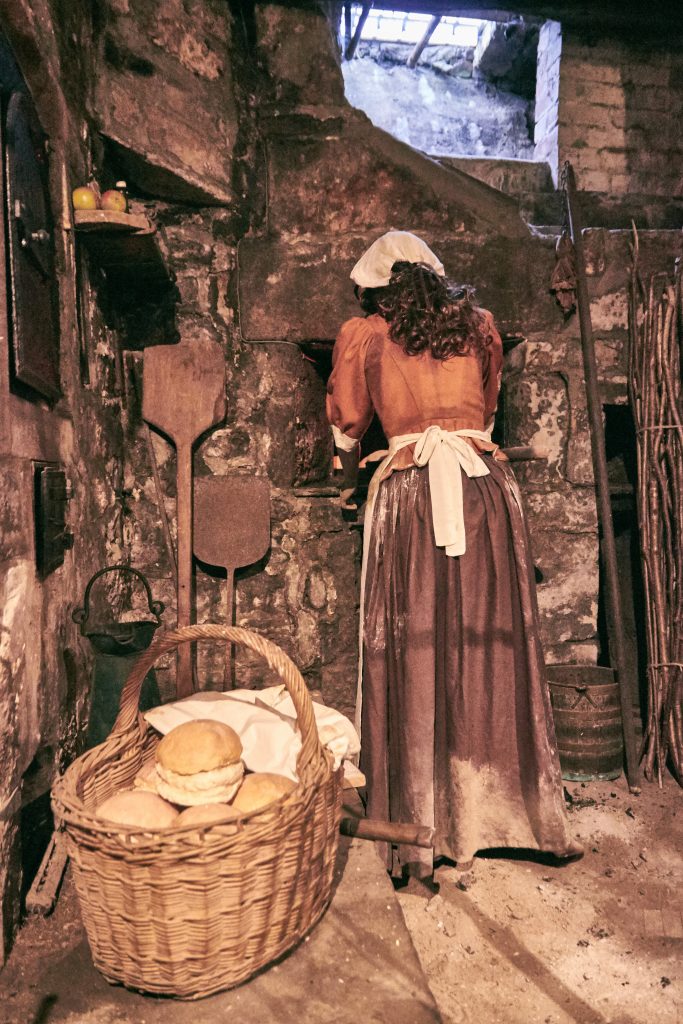Menu – Lite Bite Cafe Bar, 7 London St
When we were in London—-this was where we had Breakfast EVERY MORNING—-only a couple of blocks from our hotel—-they made a great omlet and lots of other items as well.
Lite Bite Cafe
Day trip to Bath—Train from Paddington and Back Again.
One of Britain’s best loved stations
First get to Paddington
Subways work well and there are five lines that arrive at Paddington: Bakerloo, Circle, District and Hammersmith & City lines.
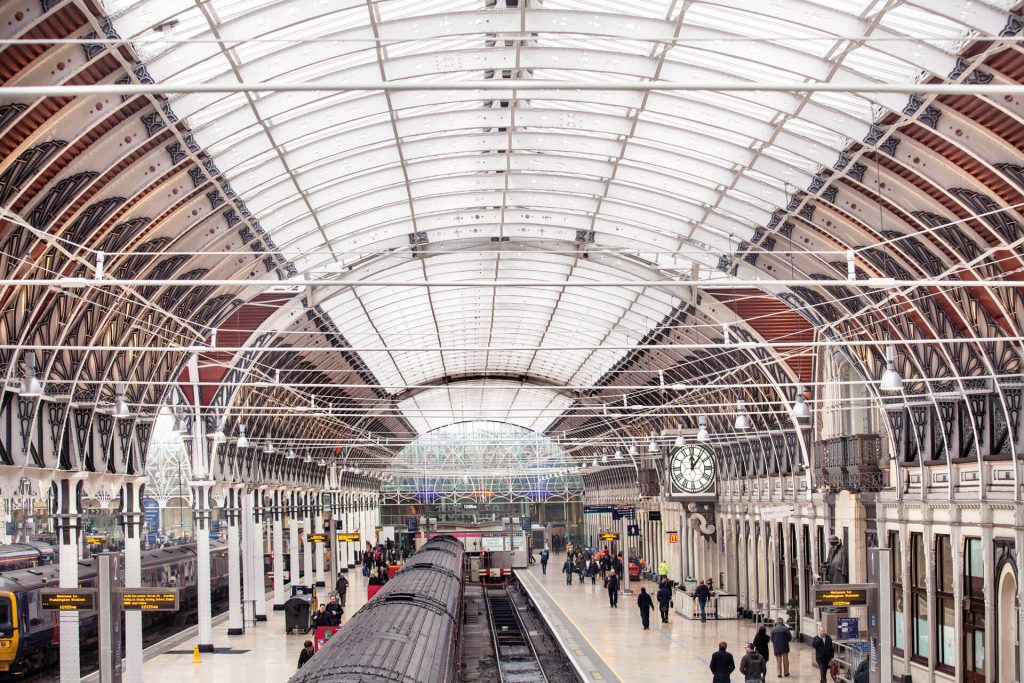
LONDON PADDINGTON STATION Walking tour 🇬🇧 Elizabeth Line | Paddington Bear 4K HDR (September 2022)
Paddington was built in 1853 and is a Grade 1 listed Building and its designer was Isambard Kingdom Brunel,
the foremost engineer of his day–he was the complete creator of GWR.
It has been described as “elegant” was apprently inspried by
Paxton’s Crystal Palace
But better.
Is the location for
Firth’s Painting Railway Station
Though it was built in 1853, the line (GWR) had started several years before that in 1838 with service to West Drayton.
Local Area History
British Railways | History & Facts
Queen Victoria
was the first British Monarch to take a train ride in 1842 traveling from
Slough
to Paddington (17 miles distance—23 Min at 44 MP—-
Prince Albert
reportedly instructed the conductor—“Not so Fast next time.”
By the end of Victoria’s reign in 1901 there were 390,00 commuters using the train service on trips averating up to 30 miles
OH and almost forgot we’re heading for Bath.
Trains from Paddington to London take on average about 1 hr 20 min – 1 1/2 hr

Virtual Tours of Bath
Bath is what it is today due to the water that bubbled up in the ancient
Roman Baths.
These became Englands only spa resort during the time of the Romans
and then again in the
18th century.
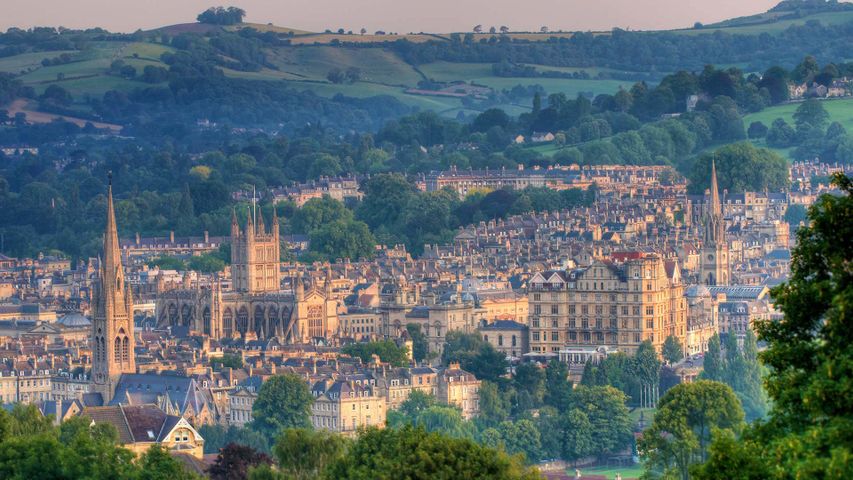
City of Bath (UNESCO/NHK)
Bath is a beautiful, compact city in the hills of the Avon Valley—-with great views of the country side. The heart of the city is traffic free and has instead musicians, museums, cafes and shops off set by Georgian Houses. In fact a local building code regulates new building to be built from limestone to maintain the present status quo.
There are parks that would be great places to put on
A Midsummer’s Night Dream
The squares and pedestrian malls relax you and make this a city a place to soak up the atmosphere of another earlier, calmer era.
Britain’s original natural thermal spa
Hop-On Hop-Off Open Top Bus Bath
Leave the depot and go north on Minerva St
There should be a plaque/sign showing where the bus stop is—this should be stop 3.
Get on bus—you can pay the driver for the tour when you board.
Please note there are other bus tours in Bath as well as walking tours My directions are only showing the areas we picked for our main attention:
Top Bath Hop on Hop Off Buses
Stop 7: West Gate
Get off here if this interests you
Continuing through the cobblestone streets we made our way around to the Thermae Bath Spa, just one of many spas in Bath over the centuries. This particular spa even has a pool, fed by the hot springs, up on the roof with great views of Bath.
ONE TRIP AT A TIME:
https://www.onetripatatime.com/historical-walking-tour-bath-england/i

Close to the baths, you’ll also find the St. John’s Hospital
THE HOSPITAL OF ST. JOHN THE BAPTIST, BATH: The hospital was founded in 1180 by Bishop Reginald of Bath (1174–91) for the sick and poor of the city in order that they might have the benefit of the waters. It was endowed with lands and tenements in Bath and with a tithe of hay from the bishop’s demesne lands, and in 1331 (fn. 1) Bishop Ralph of Shrewsbury granted to the warden and brethren a rent-charge of 100s. in lieu of the sheaves which they were wont to receive from the bishop.St John’s
Hospital was originally built adjacent to the Bath Cross hot springs, to take advantage of the alleged restorative powers of the local water. The alms houses that make up St John’s Hospital are now contained within a large two storey Georgian block, having been rebuilt in 1716 by architect William Killigrew. Now a Grade I listed building, the houses continue to be occupied by elderly local residents. Situated in a quiet courtyard, St John’s Hospital can easily be taken in as part of a tour of Bath’s historic centre, lying midway between the abbey and the Theatre Royal on either side of the city centre.
GPSMYCITY: https://www.gpsmycity.com/attractions/st-johns-hospital-28425.html
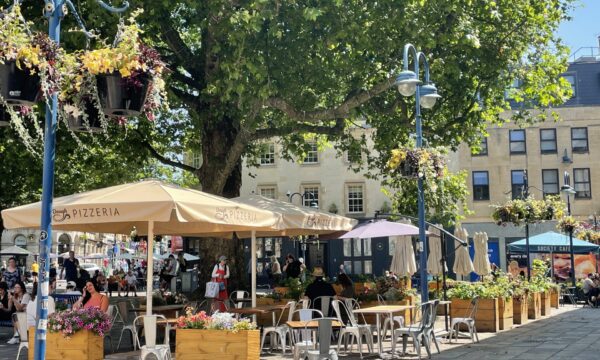
PLAN YOUR VISIT
King Mead Square
This area has shops and cafes, restaurant and the like but we are planning do do lunch at a resturant that is a few hundred years old and part of it is a museum itself. You can of course eat anywhere else you’d like–DUH.
Whatever it’s back on the bus when you’re finished
info@bearinnbath.com
www.bearinnbath.com
Reasons Everyone Should Visit Bath at Least Once
Queen Square
This is a square of Georgian Houses. Designed 1728 – 1736.
Main point of interest is an obelisk (missing it’s needle point which was hit by lightening) with an inscription by Alexander Pope, it was erected by Beau Nash in 1738 in honor of the visit by Frederick Prince of Wales.

| #13 South SIde of the Square
Jane Austin stayed here in May 1799. It’s recommended to come to the square is when the cherry blossoms are out. |
|
|---|---|
Jane Austen’s connections with Bath
Head East on Queen Square/A4 toward Wood St, past King St onto Gay
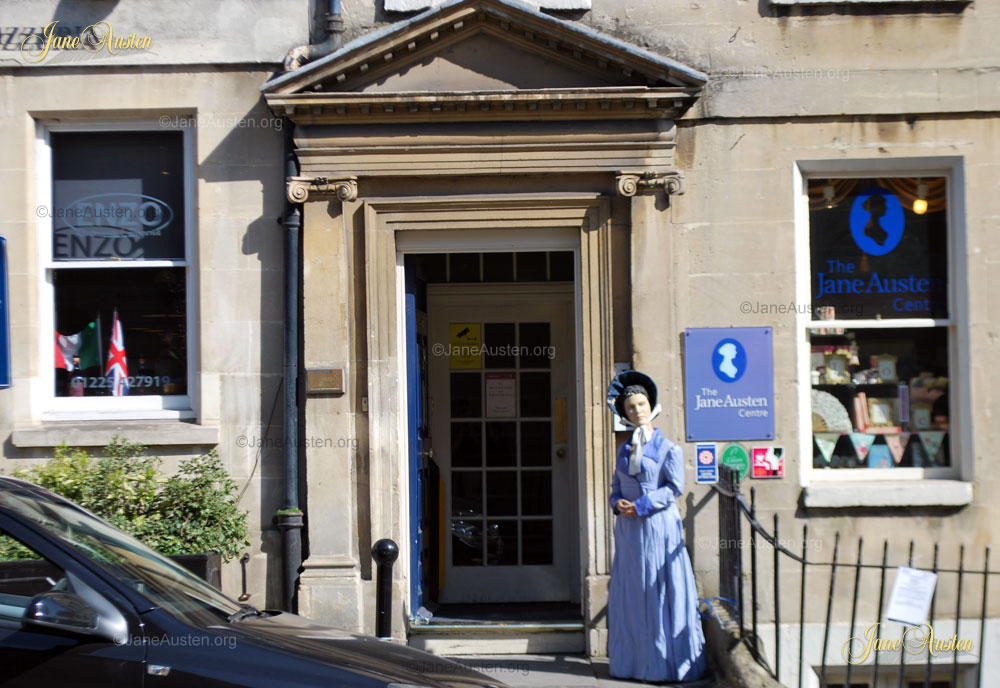 The Jane Austen Center
The Jane Austen CenterAdult Ticket Online – £14.75
Senior Ticket Online (60 years or over) – £13.25
Child Ticket Online (6 – 16 years) – £7.20
Student Ticket Online – £12.25
Family Ticket Online (2 adults and up to 4 children) – £36.50
Valid for 18 months from date of purchase. Please see terms and conditions
Find out more about Jane Autin, her time in bath, how the city helped shape her work, drresses/Regency costume and have pictures taken with famous waxwork or try tea with Mr Darcy in Regency Tea.
Return to the tour bus stop on Queens Square —board and resume the tour
Stop 9 i for the Assembly Rooms but this was not open when our visit was scheduled: More info below
Assembly Rooms
The Bath Assembly Rooms were designed by John Wood the Younger in 1769. Their purpose was to be a place for dancing and music. When they were completed in 1771 they were described as ‘the most noble and elegant of any in the kingdom’.
Things to do in Bath Assembly Rooms
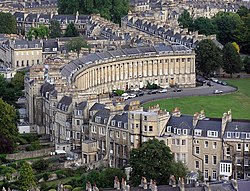
Royal Crescent from a hot air balloon,
|


Bath has the only hot springs in England
Go south on High Street
Turn right on Cheap after you cross over to far side
Suluis was a goddess and her spring was renowned for it’s healing powers. When the Romans arrived they built a bath complex around the Celtic area and renamed it Aqua Sulius.
The Best Ancient Sites in England
The Roman Bath Museum currently displays objects — usually coins or tokens—that were thrown into the bath and you can see the marvelous archcitecture that was the trade mark of Roman.
ROMANS: ARCHITECTURE
Turn Left on Stall Street sticking to the left side
And then left on Bath—the Bath Museum is at the end of the Street
Roman Baths at Bath – Virtual Tour
Roman Bath Museum
Constructed around AD 70 as a bathing and socialising for the Romans force who live far from home. It is said to be ONE OF THE BEST preserved Roman remains in the world.
11 Roman ruins worth travelling to see
After visiting the Museum return outside
Next stop is the Abbey–where there has been churches of various kinds for over 1,000 years—infact have been 3 different churches that have stood here during different periods since 757 AD.
Underneath the abbey: Uncovering more than 1,000 years of religious life in Bath
Turn right on Stall Street
The Anglo Saxon monastery was pulled down by the Normans, who built a massive Norman cathedral—begun in 1090–but it in turn was in ruins by the late 15 c and then the present abbey was born.
The Norman churches: Thousands arose stone-by-stone across a conquered land
Then Right on Church Yard
After Henry VIII it set in ruins over 70 years, then in 1616 the building was repaired and used as a parish church. Then in the 1830’s a local archiitect George Manners added penicales, flying buttresses inside and out, as well as galleries and added a new organ.
10 British Churches Ruined During the Dissolution of the Monasteries
And right on Abbey Church Yard. The church is at the end of the road and a bit to the left
The church was completed by George Gilbert Scott which included converting it into a Victorian Gothic Structure with a new ceiling and stone for vaulting.
Visit the Abbey
Abbey Church of St. Peter and Paul
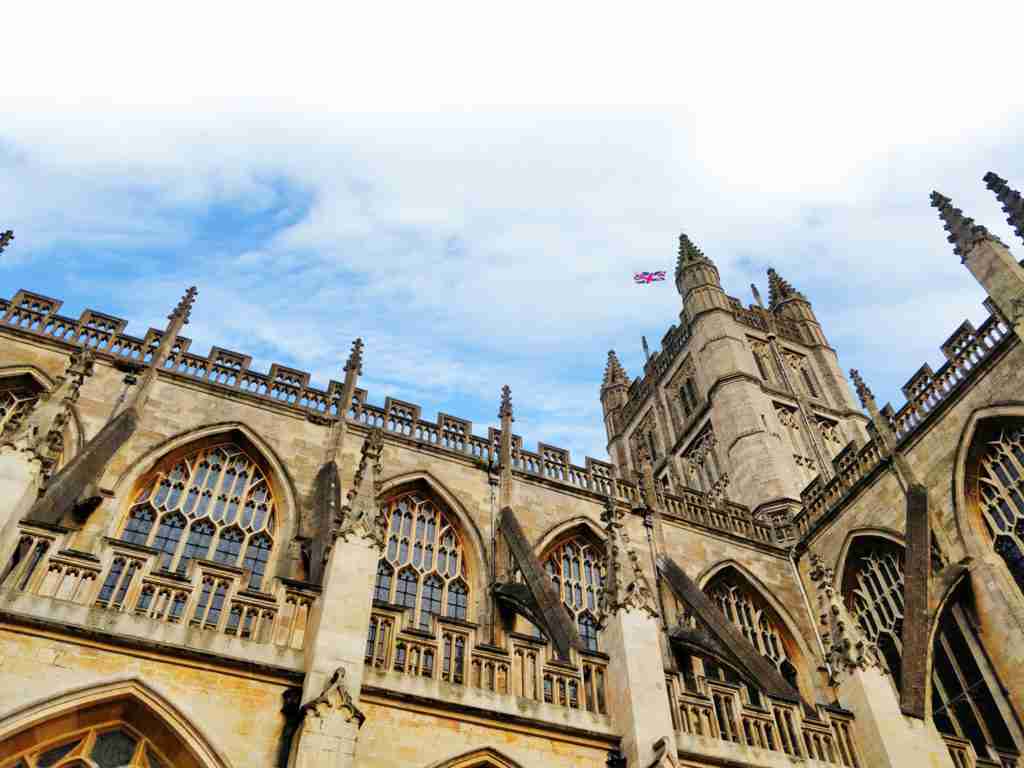
Bath Abbey, Bath, Somerset, England | Gothic Architecture | The 16th-century West Door Virtual tour
Leave when finish visit
Our next stop is said to be one of the oldest houses in Bath and contains a kitchen museum believed to be where Jane Austen wrote about pigging out on the place’s buns. They by the way were and still are eaten at breakfast, parties and hot if possible–sliced open and liberally doused with melted butter.
Return on Abbey Church crossing over to the left
Today there is a Jane Austen room at the house where you can soon enjoy the buns and tea and coffee (you can even purchase Jane Austen Tea and coffee to take home)
Turn left down Abbey Street staying on the left side
Oh and I forgot—Robert of Lewis rebuilt the Abbey we just left in the 12c and there was a southern range of buildings that are lost now. They would have included the refectory and kitchen of the Benedictine monestery which are now lost under the Lunde House which we are visiting.
Cross York St
You can see the foundations of those missing buildings: Floor and stone wall at the medieval complex in the north cellar.
The house was built in 1482 after Henry VIII’s desolation of the monasteies. Sally Lund lived here in 1880. (Hugenot Solange Luijon.)

Sally Lunde’s Historic Museum and Eating House
4 N. Parade Passage
Open for breakfast, lunch, afternoon tea, pre-theatre dinner and dinner. Menu has historic refreshment based on the original Sally Lunde’s bun–still baked from a secret recipe—as well as rich local cuisine and authentic historic dishes. An authentic English eating house serving regional English food—including a
trencher dinner.
The street name when Lunde lived here was Lilliput Alley and the house origionally sold baker’s ware from a basket in the lanes around the abbey.
visit the
Kitchen Museum
and

Abbey Ruins
in the North Cellar
and then lunch
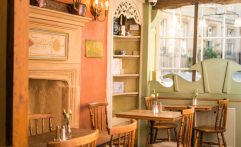
Our Menus:
Menus: Sally Lunn’s is special
Bath – Towns of Europe––Virtual walking Tour
Return to tour bus stop #1 and get back on the bus
Stop 2: Grande Parade
Stop 3: Get off and return to train station —- time to be determined by your reservation
Back to London to Padding then back to your hotel however you go.
From this station at Bath Spa








